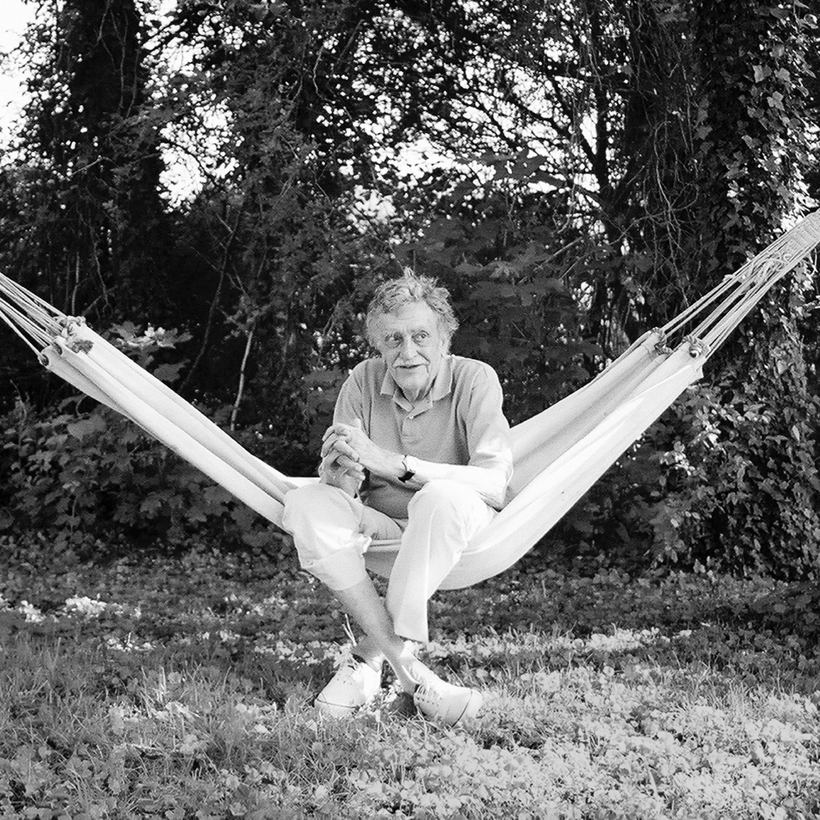In the first half of the 20th century, those persnickety New Critics referred to the analysis of authors’ personal lives in literary criticism as “a biographical fallacy.” And they were mostly right. But that was before Kurt Vonnegut and a gang of writers, such as John Barth and Thomas Pynchon, blew the house down and blurred the lines between the nonfictional world and their fictional characters.
Vonnegut gleefully injected himself into his stories, leaving readers to either mute the dissonance of his presence or to embrace his paradoxical persona as if he were riding shotgun with them.
So I don’t feel too bad about doing a biographical exegesis of Vonnegut, the man, in my book The Writer’s Crusade: Kurt Vonnegut and the Many Lives of Slaughterhouse-Five, in which I examine how Vonnegut’s most famous novel is not only a terribly sad and darkly hilarious depiction of the war trauma of its protagonist, Billy Pilgrim, but also that of Vonnegut.
And yet, I may have gone too far when I doubled down on Vonnegut’s creative mischief by going to the Lilly Library at Indiana University, in Bloomington, and rifling through the author’s archive of discarded drafts of Slaughterhouse-Five in order to develop my thesis. Judging a writer by his book is one thing. But also by his early drafts?
Vonnegut gleefully injected himself into his stories, leaving readers to either mute the dissonance of his presence or to embrace his paradoxical persona.
It’s something I wrestled with throughout my research, not unlike another author—and Vonnegut fanboy—Steve Almond, who also visited the Lilly and worried in an essay that mucking about with his idol’s initial efforts was like playing “dirty pool.”
But look at what I found! In one typed draft, Vonnegut wrote that Billy Pilgrim was in love with the young German soldier who captured him. And that Pilgrim was gay. In the final draft, Pilgrim’s heterosexuality is never questioned. What a switch!
More to the point, Vonnegut wrote in one discard that he, the author, was mildly crazy when he got home from the war. He also wrote of how his mother, who really was addicted to barbiturates and killed herself, one night took knives out of the cutlery drawer and spooked the bejesus out of him.
And he tossed out some spectacularly clunky verse. In one draft, the book opens with its protagonist speaking to the reader from the grave, crying out against war and death. It’s cloying and dogmatic and indeed belongs on the dogpile.
Vonnegut’s most famous novel is not only a terribly sad and darkly hilarious depiction of the war trauma of its protagonist, Billy Pilgrim, but also that of Vonnegut.
The old maxim goes that we learn about ourselves from our mistakes. So it must make some sense that the same applies to observing Vonnegut’s false starts. What I see in his rejects is not just his creative process but also his personal, two-decade maturation after, at the age of 22, he experienced war.
Looking closely at human failure was sort of a Vonnegut specialty. He was so interested in the vulnerabilities of our minds, or what he called our “big brains,” and how we keep getting ourselves into trouble. His highly flawed characters enable us to see ourselves. And, likewise, his writing rejects have helped me see him more clearly.
So, yes, over time, I have come to cherish the opportunity—and I am grateful to the Vonnegut family for giving me permission—to analyze and display his discards to the world. I am thankful that unlike, say, Henry James, who had all of his unpublished writings thrown into a “gigantic bonfire” so that they could not be trifled with after his death, Vonnegut kept his big brain accessible to us all, like an open book.
Tom Roston’s The Writer’s Crusade: Kurt Vonnegut and the Many Lives of Slaughterhouse-Five is out now from Abrams Press

